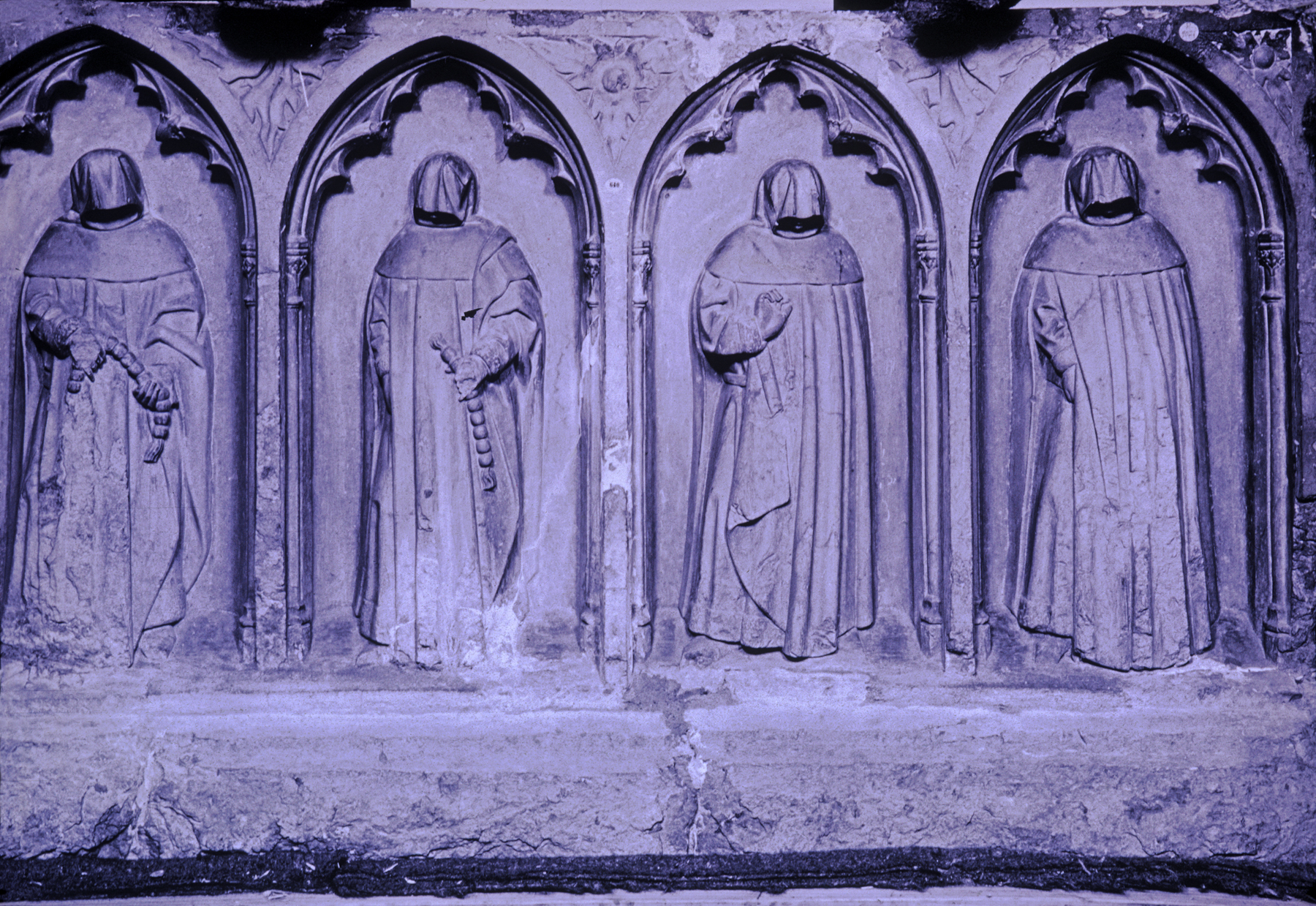Tomb Relief of Pierre de Bauffremont
(Renaissance Europe )
This panel was carved as one of the short sides of the tomb of Pierre de Bauffremont (d. 1472), official at the court of the Duke of Burgundy, Philip the Good. Four monks with heads covered in mourning stand beneath arches representing those of their cloister, through which the solemn funeral procession would pass. De Baufferemont was not buried in Dijon, as he had wished, and his tomb, commissioned in 1453, was never finished. The four slabs that were to form its sides were placed in a chapel. Three of them are now in the museum of Dijon, France.
Provenance
Provenance (from the French provenir, 'to come from/forth') is the chronology of the ownership, custody, or location of a historical object. Learn more about provenance at the Walters.
Cathedral of Notre Dame, Dijon; Daix, near Dijon [in the wall of a garden]; Mr. Champy, Chateau Saint-Apollinaire [near Dijon], prior to 1910, by purchase; Mr. Décailly, Chateau Saint-Apollinaire, 1932, by inheritance; Joseph Brummer, Paris and New York, 1933, by purchase; Brummer Sale, Parke-Bernet, New York, June 8, 1949, Pt. III, no. 640; Walters Art Museum, June 9, 1949, by purchase.
Conservation
| Date | Description | Narrative |
|---|---|---|
| 6/28/1971 | Treatment | cleaned |
Geographies
Belgium, Tournai
(Place of Origin)
France, Dijon (Place of Discovery)
Measurements
H: 34 9/16 x W: 60 5/8 x D: 6 1/2 in. (87.8 x 154 x 16.5 cm)
Credit Line
Museum purchase, 1949
Location in Museum
Accession Number
In libraries, galleries, museums, and archives, an accession number is a unique identifier assigned to each object in the collection.
In libraries, galleries, museums, and archives, an accession number is a unique identifier assigned to each object in the collection.
27.542


